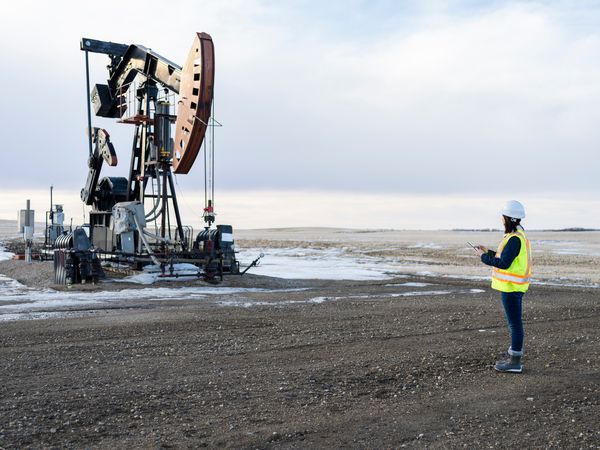Oilfield services stocks surely have the distinction of the most hated of the hated energy stocks in recent years. Strict capital discipline by exploration and production (E&P) companies in oversupplied markets has impacted oilfield service providers. In the last five years, top oilfield stocks have fallen roughly 60% while the broader markets rallied by the same percentage points. However, certain key factors make Schlumberger (SLB 0.08%) look better placed than its peers in the face of weak North America activity.

Image source: Getty Images.
International growth
Schlumberger's international revenue grew 7% in 2019. Increased activity by the E&P companies contributed to the growth in Schlumberger's revenue. After a long period of underinvestment, international operators have started investing in resource development for the long-term. Slower North American production growth may further stimulate investments by international operators as they act to fill potential supply gaps. This trend should continue to benefit Schlumberger, which earns more than 60% of its revenues from international markets.

Data Source: Schlumberger. Chart by author.
North America strategy
Capital restraint by E&P companies in the oversupplied markets has impacted oilfield services companies in North America. In the face of weak demand, Schlumberger is focused on scrapping older equipment and investing in its newest and highest technology assets to boost margins. The company is exiting underperforming businesses and focusing on operations that are asset-light. One such example is franchising technology access. Schlumberger selectively sells or leases just the technology to third-parties who then deploy it on the well-site. This subscription-based model gives the company increased market-access, without additional capital investment.
Schlumberger has reduced deployed frac fleet capacity in its pressure pumping business by 30% due to lower demand. Further, the company is open to sell this business. Similarly, Schlumberger is closing its non-core onshore coil tubing operations in North America and looking to divest its rod lift business line. This approach should help it improve margins in the weak North America market.
Attractive yield
While maintaining a strong balance sheet, Schlumberger is returning value to its shareholders via stock buybacks and dividends. In the last four years, the company has repurchased $1 billion of its common stock under a $10 billion repurchase program announced in 2016. In 2019, Schlumberger generated $5.4 billion in cash from operations and $2.7 billion of free cash flow. It paid $2.8 billion in dividends for the year and is trading at an attractive yield close to 6%.
Conclusion
Challenges in North America are expected to remain in 2020. In international markets too, demand growth might not be as robust as originally anticipated. Additionally, oil price volatility will continue to impact the stock's performance. I don't see any immediate catalysts for Schlumberger stock to turn around. It would surely be challenging for Schlumberger to achieve top and bottom line growth in the current environment.
Having said that, the company is doing a good job to drive international growth and keeping costs under control. Its North America strategy focuses on improved margins even in challenging market conditions. So, like limited upside, the downside risk for the stock from this level looks limited too. Overall, this makes its nearly 6% yield very attractive while waiting for the demand for services to pick up.







